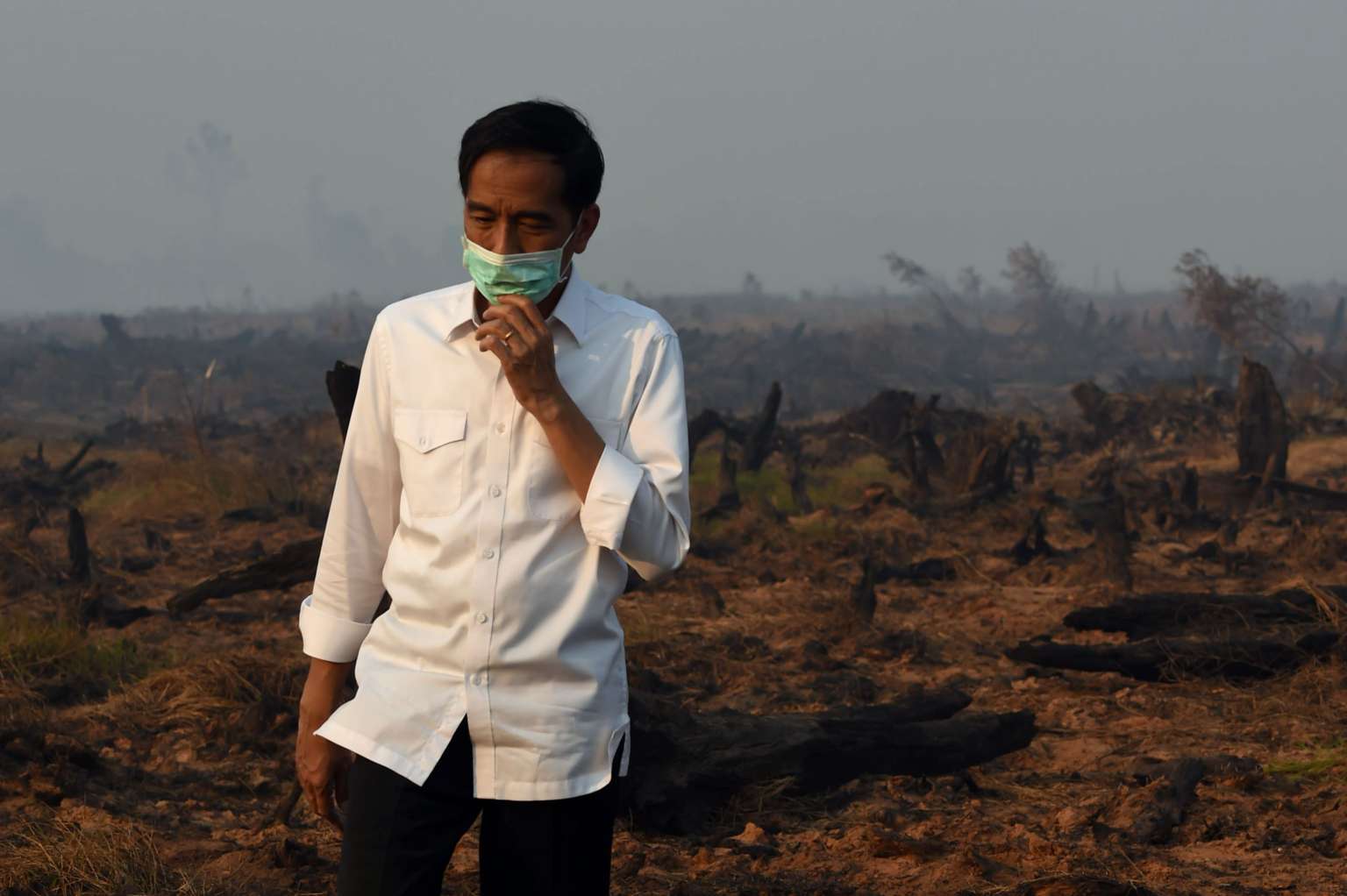Jokowi arrives in Sumatra after cutting short US visit, will head straight to haze-hit areas
Sign up now: Get insights on Asia's fast-moving developments

Indonesia's President Joko Widodo inspecting a peatland clearing that was engulfed by fire in Banjar Baru, Kalimantan, on Sept 23, 2015.
PHOTO: AFP
Francis Chan
Follow topic:
Indonesia's President Joko Widodo, who had cut short his visit to the United States earlier this week to attend to the haze crisis at home, arrived on Thursday (Oct 29) morning at the Sultan Mahmud Badaruddin II airport in Palembang, the capital of South Sumatra province.
Many were expecting Mr Joko to make a decision on whether to officially declare the ongoing haze crisis a national emergency, afters Vice-President Jusuf Kalla said on Tuesday that the government was considering doing so.
There was, however, no announcement.
A presidential palace spokesman said despite their 25-hour journey from Washington to South Sumatra, Mr Joko and First Lady Iriana will make their way to Ogan Komering Ilir (OKI), one of the worst-hit areas in the province.
"The President will be based in an office in OKI regency for several days," he said, adding that besides attending to matters of the state, Mr Joko plans to remain in the regency to personally oversee, among other things, firefighting operations and other relief efforts.
This also includes ensuring that preventive measures made to address the land and forest fires, as well as law enforcement efforts against the burning of the land and forests by companies, are carried out.
"The President chose to set up an office in OKI due to the severity of the peatland and forest fires, as well as the amount of smoke they produce," said the spokesman. "The smoke carried by northwesternly winds have resulted in haze encircling Jambi, Riau and other areas (in Sumatra)."
Mr Kalla's comments that Indonesia may declare the crisis a national emergency came after several politicians and local leaders had called for Mr Joko to do so, as the fires continued to burn unabated.
The last time the country had done so was in 2004, during the Dec 26 tsunami, which left more than 230,000 people dead in over a dozen countries.
The haze-related death toll has risen to 19 in Kalimantan and Sumatra.
The toxic smoke has regularly sent Pollutant Standards Index readings into the four-digit range. Any reading above 350 is deemed hazardous.
The decades-old haze issue affects millions of people in South-east Asia annually.
This year, however, the problem was exacerbated by an extended dry spell caused by El Nino.
This made putting out the fires even more challenging despite extensive resources being allocated for firefighting operations.
tkchan@sph.com.sg

